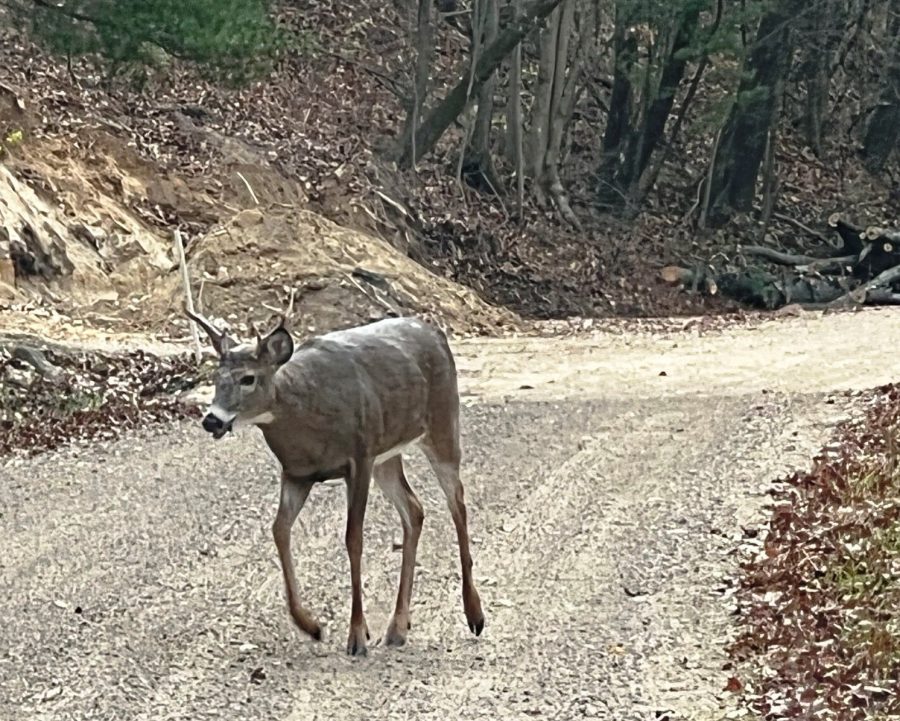Observing the rhythms of nature
This 8-pointer was walking down a town road toward Chris Hardie’s pickup truck.
November 13, 2022
The end of October and early November brings the fall breeding season for deer, also known as the rut. It’s a time of physiological, behavior and chemical changes for deer as well as for bow hunters who make it their preferred hunting dates.
Bucks are seeking doe in estrus and they sometimes throw caution to the wind in their single-minded pursuit of breeding. That makes them move around more and present themselves as easier targets to hunters.
I saw that single-mindedness firsthand recently while driving down a town road a few miles away from home. I came around the corner on a gravel road and a decent-sized eight-point buck started walking toward my truck.
I stopped and took a couple of photos through the windshield and then rolled the window down as the buck – his tongue hanging out – kept walking towards the truck before veering into the woods.
The buck was totally oblivious to the truck and to the classic rock tunes I was playing on the radio. He never raised his tail in caution and had no concerns about me.
Even when we don’t see bucks, there are other signs of the rut. Bucks like to mark their territory. Rubs are when bucks rake their antlers on brush, small trees or saplings. They peel the bark and leave behind scents from their forehead glands.
Bucks also create scrapes by pawing a bare patch of ground, usually in an oval shape and often under trees. The buck leaves behind scent from a gland located between the toes of their front hooves and will sometimes urinate down the tarsal glands on their inner lower legs for some additional aroma.
The overhead branches or the ends of twigs are where bucks – and does – will chew and lick and deposit additional scent from their forehead and eye glands.
I found evidence of both rubs and scrapes while walking through our woods and creek bottoms. It was in the latter where there were signs of another seasonal occurrence – trout spawning.
Little Creek – the spring-fed waterway that runs through our valley – originates on the farm and is listed as a Class I trout water.
While the creek is too shallow to support trout year-round, it is used by brook trout in the fall for spawning – the process where trout lay eggs. Spawning season is triggered by water temperatures and trout swim upstream from Beaver Creek.
During a recent walk along the creek my wife Sherry and I spotted several trout easily spooked by our steps. The female trout uses its tail fin to make a small depression in the streambed called a nest or a redd and the female and a male will release eggs and milt – or sperm – simultaneously.
The process is repeated upstream with additional redds until the trout is out of eggs. A trout can lay thousands of eggs, depending on its size. The eggs remain in the redds over the winter – kept alive by oxygen from the flowing water.
Then in the spring the small fish – called fry – will emerge. They will stay in the shallow stream seeking food and shelter until they are big enough to need deeper pools.
The ones that survive and grow large enough will return to spawn in a year or two when they are mature.
And nature’s rhythms continue.













